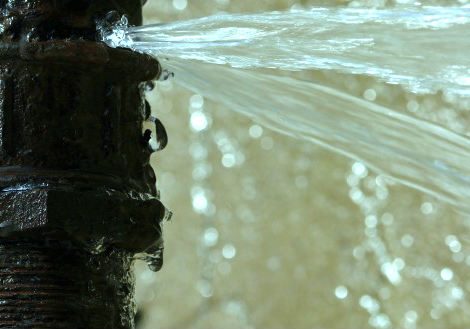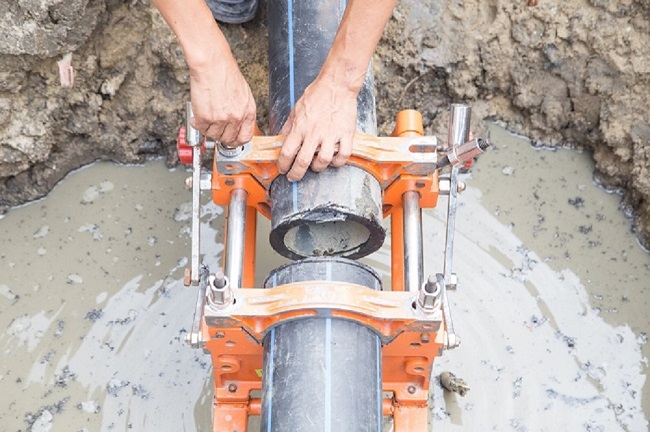Stop the Flood: Techniques for Detecting as well as Repairing Ruptured Pipes
Stop the Flood: Techniques for Detecting as well as Repairing Ruptured Pipes
Blog Article
We've stumbled on this great article pertaining to How to Install and Connect a New Dishwasher down the page on the web and thought it made perfect sense to write about it with you in this article.

A ruptured pipeline is a major emergency; you can only stand as you view water you pay very much to reunite with the earth. In worse situations, you see a swimming pool on your kitchen floor, which is an excellent journey threat, specifically if you have children around. If the pipeline that burst was in your walls, problem: you might require to paint that whole section.
How can a disaster like a burst pipe be stopped as well as handled? Well, by paying attention to your specialist emergency plumbing professionals and also adhering to these regulations.
Just how do I recognize when my pipes have burst?
Fluctuating water pressures
Pipes do not just burst in a day. You may have discovered that your kitchen tap or shower doesn't run immediately when you transform the tap. It might stop for a couple of secs and afterwards blast you with even more pressure than normal.
In various other circumstances, the water might seem typical initially, then drop in pressure after a few secs.
Damp wall surfaces and also water discolorations
Prior to a pipe bursts, it will leak, most times. If this relentless dripping goes unnoticed, the leak may graduate right into a vast tear in your pipeline. One simple method to avoid this emergency is to look out for damp wall surfaces ad water discolorations. These water spots will lead you right to the leakage.
Puddles under pipelines as well as sinks
When a pipeline ruptureds, the outflow forms a pool. It may appear that the puddle is expanding in dimension, and despite the number of times you mop the pool, in a few minutes, there's an additional one waiting to be cleaned up. Often, you might not be able to trace the pool to any type of noticeable pipelines. This is a sign to call a specialist plumber.
Untraceable leaking sounds
Pipeline bursts can take place in the most undesirable locations, like within concrete, inside wall surfaces, or under sinks. When the house goes quiet, you may have the ability to hear an aggravatingly consistent trickling noise. Also after you've checked your shower head as well as kitchen faucet, the dripping might continue.
Precious reader, the leaking might be coming from a pipeline inside your walls. There isn't much you can do concerning that, except inform an expert plumber.
Shut down the Water
When water ices up, it expands in quantity by about 9 percent. As well as it increases with remarkable pressure: The pressure inside pipelines may go from 40 pounds per square inch to 40,000 psi! No pipeline can hold that much pressure, so it bursts. The break might happen where the ice kinds, but more frequently, it takes place where water pressure discovers a weak spot in the pipe. That might be inches or even feet from the frozen location. Find the water shutoff valve as well as shut off the water to stop more damage. You could also need to shut down the electrical power also, relying on where the leaks happens and also how large it is.
Contaminated water
Many individuals think a ruptured pipeline is a one-way outlet. Rather the contrary. As water spurts of the hole or gash in your plumbing system, contaminants discover their method.
Your water might be contaminated from the resource, so if you can, examine if your water tank has any issues. Nonetheless, if your alcohol consumption water is supplied and cleansed by the city government, you need to call your plumber immediately if you see or smell anything funny in your water.
What do I do when I identify a ruptured pipeline?
Your water meter will continue to run even while your water wastes. To lessen your losses, discover the primary controls as well as transform the supply off. The water pipe are an above-ground framework at the edge of your home.
How to Fix & Detect a Leaking Pipe
How Do I Know if a Pipe is Leaking?
Leak detection tests can help you determine if your pipe has a leak. Even if you don’t see an apparent leak, you should still conduct leak detection tests regularly to save water and money—and prevent major damage to your home.
Water meter. It can be helpful to figure out what your usual water meter usage numbers are and then monitor them regularly. To monitor your meter, first, turn off all water faucets in your home. Check the meter and write down the numbers. In a few hours, check the meter again. If the numbers have changed, you have a leak. Water gauge. Use a water gauge to test your water pressure. Your showerhead should produce a certain amount of water pressure based on its model and design. If the pressure is lower than it is supposed to be for that specific showerhead, your home likely has a leak. Puddles. Look inside your bathroom, laundry, and kitchen sink cabinets. Puddles around the cabinets or around toilets, tubs, showers, and washing machines indicate the presence of a leaking pipe. You may also notice loose tiles, peeling or flaking paint, or mold caused by water accumulation. Napkin test. Even if you don’t see any puddles, you may still have a leak. You can test for water leaks in the bathroom, laundry, and kitchen by wiping below-sink connections with a napkin, paper towel, or piece of toilet paper. If it becomes damp, you probably have a leaking pipe under the sink. Discolored walls. Walls that are discolored—usually with brown or yellow stains—or bulging might mean that they have been impacted by water damage caused by a leaking pipe. Smell. A leaky pipe will create sitting water, and over time, that water may develop a musty smell. If your home smells musty, but you can’t locate the source, it may be due to a leak. Steps for Fixing a Leaking Pipe
A leaky drain can be remedied by tightening the pipe base, replacing the drain seal, caulking the rim, and tightening the pipe nut. Similarly, a leaking toilet pipe can be treated by tightening the packing nut. You may also need to replace the valve. A leaky faucet may just need tightening or replacement of the washers. If that doesn’t work, consider replacing your faucet. If your pipe has a hole in it, you may want to use a pipe leak sealer or pipe leak tape. This quick fix for water pipe leaks can also temporarily fix a copper pipe leak. https://www.ahs.com/home-matters/quick-tips/how-to-tell-if-pipes-are-leaking/

As a reader on How to Install and Connect a New Dishwasher, I think sharing that excerpt was worthwhile. Feel free to take a moment to share this write-up if you appreciated it. Thanks a lot for your time. Don't forget to check up our website back soon.
Check This Out
Report this page